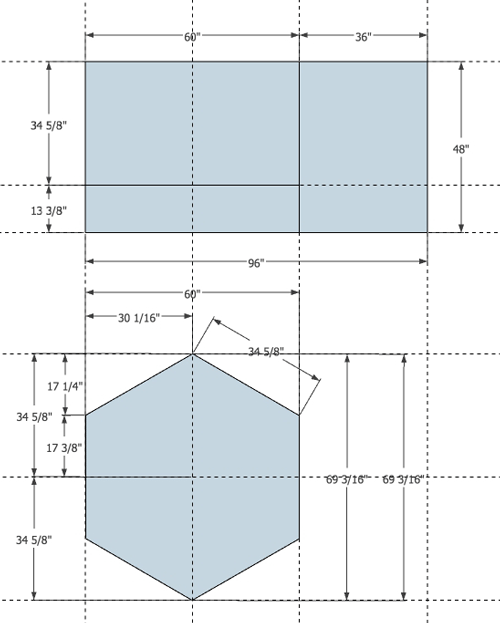January 19, 2020
The Hexagon

Art making is a reconciliation of three processes of intellection: intuition, an analysis of history plus its projection into the future, and the impact of personal narrative. Freedom is the basis of art. Art history is the generational critique of inherited culture and its revamping appropriate to the perspective of each milieu. Art is the media based exercise of freedom. Personal narrative is psychological understanding of the circumstances of ones existence. Intuition is an expression of deeper understanding below direct conscious thought. Intuition is best informed by a feral omnivorous curiosity, it arises inexplicably and involuntarily against a socially constraining framework.
I cannot account here fully the wellsprings of exactly how hexagonal shapes became compelling for me at this moment. The purpose of this blogpost is to chart as best I can at this moment the position and movement of this work.
The Prado paintings came to mind almost in a flash. Within the time frame of more or less a day, three thoughts arose nearly all at once, all in the context of what to paint next. First thought: a field of the same color paint would let me emphasize the formal qualities that I have featured front and center nearly my whole life as a painter. It would be a kind of painting that's more than drawing, but not by much. But what to paint? That's when the second thought arose: It's been 50 years since I first visited the Prado. The well of subjects there is bottomless. Scarring a monochrome surface with commemorating images, not a bad inside jibe to the purist mentalities still among us. I like to poke the rib of the conceit that abstraction could be brought to its eschaton in the final act of monochrome painting. Then there was an issue of continuity. I had been using a frisket mask one way or another for several years, going cold turkey didn't seem right. Then the third thought: an edge condition that could feel like the classical architectural ornamentation of the Prado, a distant echo. Regular undulations at the edge would frame the paintings, an edged fringe is a stage exit of the frisket mask.
It was a great run, but it couldn't last forever, commemoration is a time based activity after all. The Prado paintings are destined to be a limited set. As the year was coming to a close, a similar intuitive flash sequence happened. The edge condition dial on painting's instrument panel should be dialed down to the click of zero. The shape of the mask could shift to the shape of the canvas. OF all the planar shapes, a hexagon is closest to a square and rectangle, but only two ordinates away from the quadrilateral referents of conventional architecture, the ultimate destination of painting. I like that this geometry for painting implied a different geometry of an architectural housing. With this formal device, a drawing/painting on the monochromatic field would be kept in motion by the edges, contrary to the traditional rectilinear monochrome.

One last note in this hexagonal rumination, a salute to delightful genius. Vi Hart is a YouTube creator that balances science and imagination in a unique way. Her last upload is almost a year ago, apparently topping off a wonderful ten year run online. Wonderful, wonderful stuff.
Posted by Dennis at January 19, 2020 3:19 PM
Leave a comment